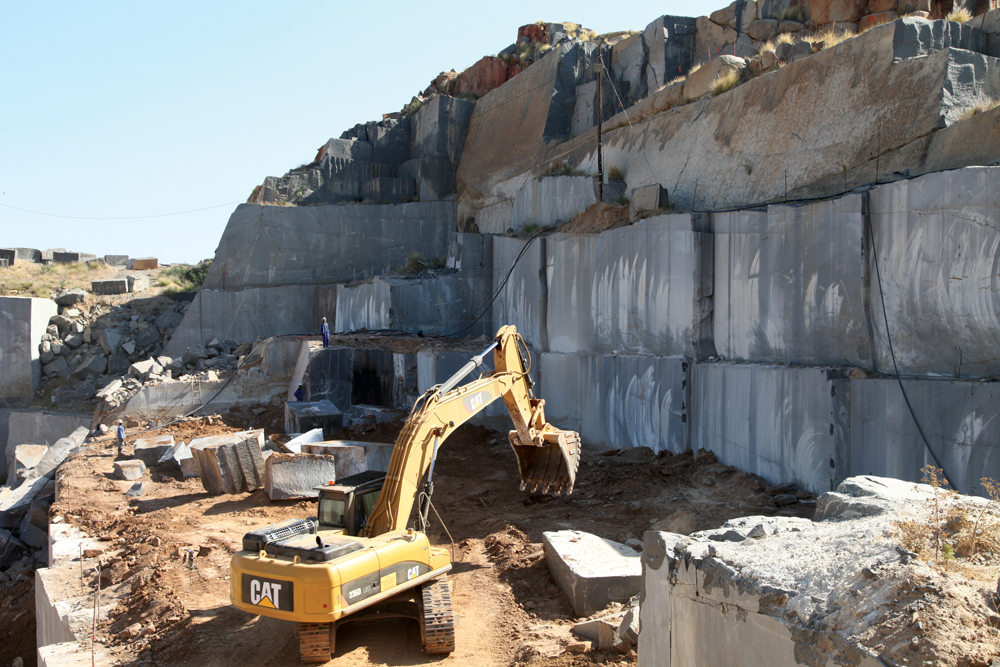Diving into of Granite Quarries in South Africa
Wiki Article
Unearthing the Rich History and Lasting Practices of Granite Quarrying
As we depend on the precipice of revealing the complex tapestry of granite quarrying, a trip through time discloses not simply the physical act of extracting stone however also the social and historic value woven into the really material of this technique. From the old origins that laid the structure for modern-day quarrying techniques to the lasting techniques that are shaping the future of this market, each carve mark on granite surface areas narrates waiting to be unearthed (granite quarries in south africa). The tradition of granite quarrying extends much past mere extraction; it is a testimony to human resourcefulness, resilience, and the enduring appeal of this majestic stoneAncient Beginnings of Granite Quarrying
Going back to old civilizations, the practice of quarrying granite has been an indispensable component of human background and building development. The earliest proof of granite quarrying days back to old Egypt, where large pyramids and complex sculptures were crafted from this resilient rock. The Egyptians made use of primitive tools to draw out granite blocks from quarries, showcasing the relevance of this material in their monumental building and constructions.Moving on in history, the Greeks also made significant contributions to the quarrying of granite. The Greeks used granite in various architectural wonders, such as holy places and statuaries, showing their ability in shaping and sculpting this sturdy rock. The Romans additionally fine-tuned the methods of quarrying granite, utilizing sophisticated tools like chisels and hammers to extract and form granite for their legendary frameworks.
With the centuries, the method of quarrying granite has actually evolved, with modern-day technologies improving performance while keeping the classic charm of this natural stone - granite quarries in south africa. From old human beings to modern home builders, the tradition of granite quarrying remains to shape our globe
Development of Quarrying Methods
The evolution of quarrying techniques has actually been marked by a continuous development towards better performance and accuracy in removing granite. From the fundamental techniques employed by our forefathers to the advanced modern technologies utilized in modern quarrying operations, the industry has undertaken substantial improvements. Early quarrying methods included hand-operated labor with fundamental devices such as blades, hammers, and wedges to draw out granite blocks from the earth. As civilizations progressed, methods like fire-setting and primitive dynamites were introduced to facilitate the removal procedure.In even more recent times, the development of equipment changed the quarrying market, making it possible for much faster removal rates and increased productivity. Technologies such as ruby wire saws, high-pressure water jets, and pneumatically-driven drills have come to be basic in modern quarries, enabling accurate cutting and lowered waste. Advancements in computer-controlled tools and 3D modeling have actually optimized quarrying operations, leading to minimal ecological impact and enhanced sustainability techniques. As the need for granite continues to climb, the evolution of quarrying methods remains essential to meeting industry requires effectively and sustainably.
Cultural Relevance of Granite
Granite holds an extensive social relevance throughout different human beings as a result of its long-lasting presence in architectural her response masterpieces and prized monuments. From the stunning pyramids of Egypt to the detailed carvings of the Angkor Wat temple in Cambodia, granite has actually been a product of selection for sharing splendour and durability in social heritage. In ancient Rome, granite columns embellished temples and public buildings, symbolizing strength and permanence. The cultural significance of granite prolongs past its physical attributes; it symbolizes resilience, stability, and eternity, making it an icon of withstanding traditions and traditions.
Lasting Practices in Quarrying
In the middle of the rich background of granite quarrying and its social importance lies an expanding emphasis on lasting methods within the industry. As ecological understanding and issues about source depletion have actually increased worldwide, the quarrying sector has actually increasingly welcomed sustainable methods to lessen its effect on the setting and surrounding areas.
Moreover, recovery and recovery of quarry sites post-extraction are indispensable to lasting techniques. By recovering quarried locations to an all-natural or helpful state, such as developing wild animals habitats or leisure spaces, quarriers can offset the ecological impact of their operations and contribute positively to the neighborhood ecological community.
Heritage of Granite Quarrying
With a historic background steeped in craftsmanship and commercial progression, what withstanding effect has granite quarrying left on the landscape of contemporary culture? The legacy of granite quarrying goes beyond mere extraction methods; it has shaped building wonders, urban landscapes, and social heritage worldwide. The sturdy nature of granite has actually made it a favored choice for monoliths, structures, and infrastructure, standing as a testimony to the ability and creativity of quarry employees throughout generations.Furthermore, the economic impact of granite quarrying can not be neglected. The industry continues to give job opportunity and drive neighborhood economic situations in regions where granite removal prevails. It has additionally spurred technical improvements in quarrying techniques and tools, causing more reliable and sustainable techniques.
In regards to sustainability, the tradition of granite quarrying consists of initiatives to reduce ecological influences through improvement tasks and responsible resource monitoring. By stabilizing economic rate of interests with ecological stewardship, the sector strives to make sure that future generations can remain to profit from this enduring natural resource.
Verdict

Report this wiki page